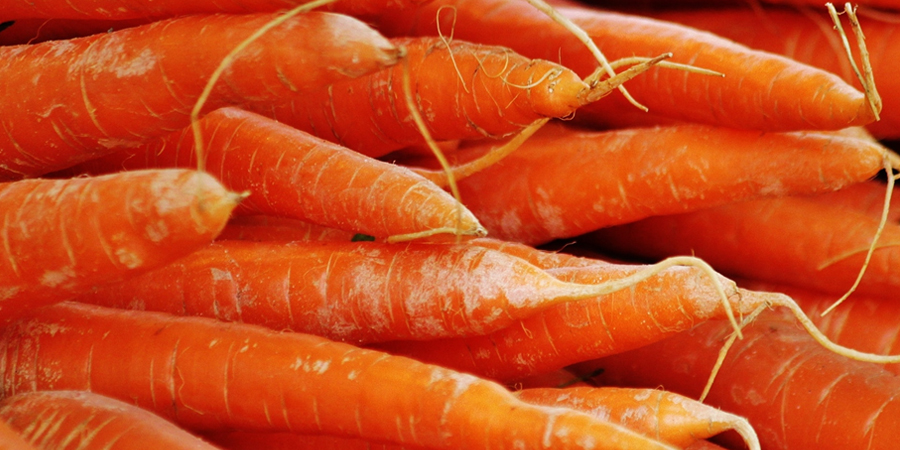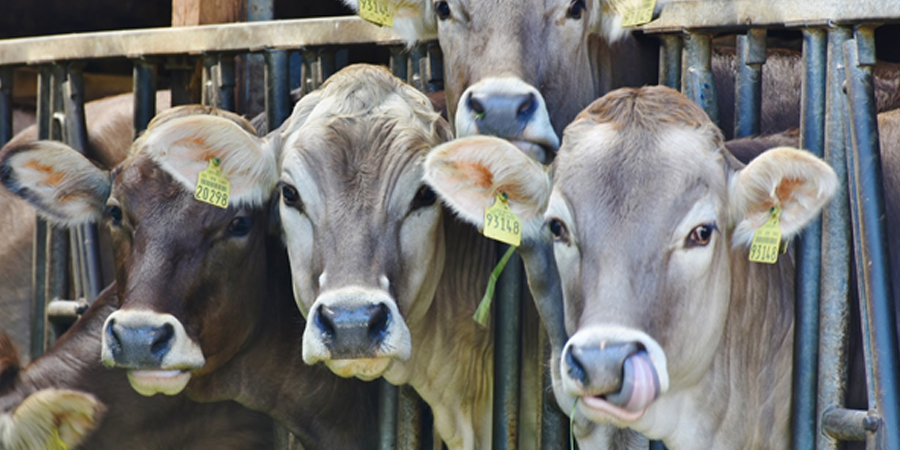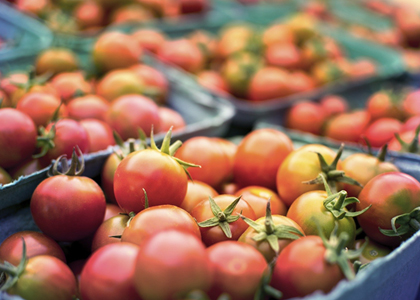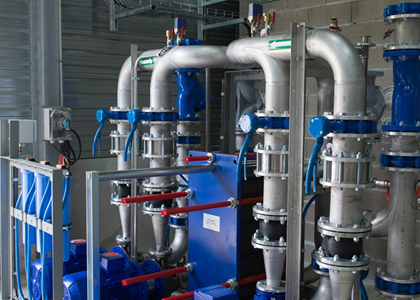Home / Blog / Regenerative agriculture – a workable solution for saudi arabia? – Pros and cons
Summary
As environmental awareness and education standards rise regionally and internationally, citizens are increasingly becoming conscious of their carbon footprint, especially regarding the food supply chain. Whilst methods supporting agricultural sustainability gain ground amongst farmers, forward thinkers in the field are looking for ways past conservation, to the regeneration of natural resources. These scholars, academics, and farmers are actively working on solutions to improve the degradation of biodiversity and soil fertility within global agronomy.
Regenerative farming methodologies, therefore, could be the next step in the agricultural sustainability cycle. They are a collection of farming practices that help to sequester carbon, improve soil quality, and reduce erosion and runoff to offer a more sustainable way of growing food.
In a Saudi context, regenerative agriculture has the potential for wider implications. The low-tech methods used in conservative agriculture can regenerate the country’s coastal planes by retaining a large percentage of rainwater that is otherwise wasted[1]. By employing conservation agriculture practices like organic crop production and grazing, tree crops, agroforestry including tree-intercropping, multi-strata agroforestry and permaculture, silvo-pastures, multi-paddock grazing systems, and rewilding, the country can potentially bring areas of barren land into cultivation.
This post works to familiarize you with the impact of these regenerative agricultural practices on food production, carbon sequestration, and biodiversity enhancement so that you can determine their scope for implementation.
INDEX
- REGENERATIVE AGRICULTURE
- SCOPE OF REGENERATIVE AGRICULTURE
- REGENERATIVE AGRICULTURAL PRACTICES
- PROS OF REGENERATIVE AGRICULTURE
- CONS OF REGENERATIVE AGRICULTURE
- REGENERATIVE AGRICULTURE IMPLICATIONS FOR SAUDI ARABIA
- KEY TAKEAWAYS
Regenerative agriculture – a workable solution for Saudi Arabia?
Pros and cons
The agriculture industry currently ranks as one of the largest emitters of carbon dioxide in the world. Combined with deforestation and poor forest management, it makes up a third of all man-made greenhouse emissions. Globally, people, and industries, are becoming increasingly interested in adopting sustainable practices, and within agriculture, there is considerable pressure to reduce emissions and limit waste. Farmers need to find alternative, environmentally-friendly growing methods that continue to meet a rising demand for food that is also kinder to the earth.

REGENERATIVE AGRICULTURE
Regenerative farming is a collection of farming practices that helps reduce carbon emissions, improve soil quality, as well as reduce erosion and runoff to provide a more sustainable way of growing food. Regenerative agriculture bases itself on the premise that farmers can leverage the photosynthesis of plants to increase nutrient density and improve soil health by increasing organic matter. These practices make crops more resilient whilst helping to close the carbon cycle.
SCOPE OF REGENERATIVE AGRICULTURE
A practice may be considered regenerative agriculture if it accomplishes the following:
- Increases the resilience and biodiversity of an ecosystem
- Improves water retention and percolation
- Makes water runoff safer and cleaner
- Builds soil health and quality
- Avoids harming cultivation land
- Helps reverse or offset carbon emissions from traditional agricultural practices
- Works with whole systems, instead of just isolated segments
It also pays to remember that the important practices associated with regenerative agriculture include:
- Minimizing or avoiding tillage
- Eliminating bare soil
- Encouraging plant diversity
- Using water percolation
- Integrating on-farm livestock and cropping operations
REGENERATIVE AGRICULTURAL PRACTICES
A regenerative farming approach focuses on restoring soils that have been degraded by overuse or too much exposure to artificial fertilizers and pesticides through industrial and agricultural practices. Conversely, regenerative farming’s methods promote conservation and healthier ecosystems by rebuilding soil’s organic matter through holistic farming and grazing techniques.
Some practices used across restorative agriculture include:
- Reduced tillage: Tillage burns fuel, releases soil carbon, and offers little benefit to the soil, so there is little to no tillage in regenerative agriculture.
- Reduced nitrogen fertilizer use: Nitrogen fertilizer has a huge carbon footprint; therefore, restorative agriculture uses reduced amounts.

- Methods to increase soil organic matter: Organic matter within the soil performs multiple beneficial functions. In regenerative agriculture practices, for every 0.1% increase in soil organic matter per hectare, an additional 8.9 tons of carbon dioxide is sequestered.
- Plant diversity: The most productive and fertile soil is rich in plant and animal diversity. Healthier soil supports healthier plants. C4-rich plants, like sorghum and millet, can sequester much higher levels of carbon and encourage more diversity across both arable and livestock systems.
- Living roots in the soil at all times: Soil should never be left bare for many reasons. The more time it has roots growing through it, the more carbon is being pushed back into the ground. This raises the fertility of the soil and increases water-retention capacities.
- Use of catch and cover crops throughout the rotation cycle: Whilst they are growing, cover crops are pumping liquid carbon into the soil through their roots to increase plant diversity and living roots. When they are terminated, their decaying tissue contributes more carbon to the soil in the form of organic matter.
- Lower pesticide use: The manufacturing of pesticides for crop protection relies heavily on fossil fuels. Alongside reducing nitrogen use, a well-managed regenerative system can quickly reduce pesticide use to negligible levels.
PROS OF REGENERATIVE AGRICULTURE
Regenerative agriculture practitioners let nature do the work for them. There are many advantages of incorporating conservative agricultural practices into your farming organization, such as:
- No GMOs: This is probably one of the strongest arguments in favor of regenerative, organically grown produce. Organic farming does not allow the growth or production of genetically modified organisms.
- Healthier soil: Soil organic matter is a plant or animal tissue in the process of decay. Whilst most soils are only 2% to 10% soil organic matter, it plays a vital role in determining the health of the soil and the plant. It pays to keep in mind that a 1% increase in soil organic matter helps soil hold 20,000 more gallons of water per acre. A higher water-holding capacity means crops are more resilient through times of drought or heavy rain. By maintaining surface residues, roots, and soil structure with better aggregation and pores, soil organic matter also reduces nutrient runoff and erosion.

- Healthier yields: It goes without saying that the healthier the soil, the healthier the crop yield. When plants have the nutrients and root systems they need to thrive, they build compounds to help protect against insects and disease. There is also growing evidence that a healthy soil microbiome full of vital bacteria, fungi, and nematodes is more likely to produce nutrient-dense food, promoting better human health.
- Reduced runoff and erosion: Crops can be rotated year-round in regenerative agriculture, which reduces water and fertilizer runoff. Healthier soil is also less prone to erosion.
- Reduced costs: Employing regenerative agricultural methodologies means that you don’t have to spend money on artificial fertilizers because the soil is healthy and replenishes itself. Additionally, you don’t have to invest in expensive herbicides and pesticides because the farm is a more robust ecosystem that can tolerate disturbances by invasive or competing species.
- Supports pollinators: Organic agriculture does not use synthetic agricultural chemicals, such as neonicotinoids and glyphosate, that are known for being harmful to pollinators.
- Integrates livestock into arable systems: Regenerative agriculture allows for enterprise stacking on the same farming unit or for partnerships with neighboring livestock businesses. There are opportunities for grazing cover crops and for short- to medium-term grass or herbal leys. With livestock comes manure, which returns varying levels of nutrients and organic matter to the soil, reducing the need for manufactured fertilizer.
- Healthier working environment for farmers: A pesticide- and artificial fertilizer-free environment is healthier as it does not expose you or your farm workers to toxic synthetic agricultural chemicals. Bear in mind that prolonged exposure to pesticides has been linked to a higher prevalence of neurological diseases. The greater your exposure to chemicals, the more likely you are to suffer from a variety of health problems ranging from headaches and fatigue to memory loss.
- Increased climate-friendliness: Organic farming is friendlier to the climate because it stores carbon in healthy soil, and reduces energy requirements by relying more on physical and animal labor rather than fossil fuels. It eliminates the use of petroleum-based fertilizers and pesticides and supports natural ecosystems that store carbon, such as forests and prairies. Lastly, it reduces the production of greenhouse gases due to a reduction in fossil fuel use.
- It allows for specialization opportunities: Conventional farming practices focus on the growth of a specific commodity crop. Through organic farming practices, there are more opportunities to specialize. This is because you and your farming practice will grow crops that are most suited to the soil composition available to you.
The advantage of being able to grow a specialty crop is that these products usually command a higher price in the market. Organic foods can be priced about 20% above commodity crops. Specialization can add another 20% to 40% to the final price. Take into consideration that crops grown using regenerative techniques across farming practices in the US have increased gross profit margins by 40% to 50%. Many organic farmers can sell directly to their customer base as well, which eliminates additional overheads.
CONS OF REGENERATIVE AGRICULTURE
One of the biggest disadvantages of regenerative and conservative agriculture is related to the scalability of operations. Becoming more sustainable generally means that you will have to downsize the size of your crops so that they don’t leach the nutrients out of the soil. So, if you are a large farming enterprise and want to apply regenerative agriculture across the board, you may need to seek expert assistance on how to make your operations more sustainable.
Here are some other cons to keep in mind:
- Little to no subsidies: Public consciousness regarding sustainability in agriculture still has a long way to go in this region. Governments are slow to offer farm subsidies to encourage the implementation of regenerative agricultural practices. Without this additional support and encouragement from official sources, it is difficult to grow specialized products in a market saturated with commodity products. Consequently, you are left taking more risks that leave you financially vulnerable.
- It requires more work: Regenerative agriculture requires more work to produce goods that are ready for sale. There is more physical burden like pulling weeds and other cultivation techniques, which in conventional agriculture can be dealt with using artificial pesticides and tillage machines.
- Requires specialized knowledge: The quality of a crop produced through organic farming is heavily reliant on your skills, knowledge, and experience. In regenerative farming, you have to monitor crop growth patterns during every critical stage of growth.
If you are unable to recognize and address a problem, the value of the crop may be affected. You also need in-depth local knowledge about soil systems, ecology, meteorology, and other factors that can influence the growth of crops. - Unique marketing challenges: Most farmers like yourself will agree that organic foods are more expensive than commodity foods or commercially grown products. Currently, the local market for organic foods is not as defined as it is for other crops. This makes it difficult for specialty farmers to compete with other commercially produced products that are available easily at lower costs.
- Rigorous certification process: To be certified as an organic producer, you need to spend more money to hire certifying agents, which adds to the overall cost of production.

- It is more expensive than commercial farming: To qualify as an organic farming enterprise you need to invest in infrastructure and other start-up costs. Soil amendments, such as rock dust, are more expensive for many farmers when compared to the chemicals traditionally used in commodity farming.
- Reduced profit margins and increased costs: Any new agricultural system that doesn’t incorporate conventional methodologies will require larger initial investments and work. This means that you may have reduced profit margins.
What’s more, organic crops have a shorter shelf life as they are not treated with waxes or preservatives to maintain their freshness during the shipping process. If product arrivals are delayed or mishandled, entire shipments or crops may never make it to the market for consumption.
REGENERATIVE AGRICULTURE’S IMPLICATIONS FOR SAUDI ARABIA
Investing in regenerative agriculture has the potential to address not only issues pertaining to food supply but also climate change. In a country like ours, with harsh weather conditions, depleting natural water resources, and special cultural implications, regenerative agriculture practices hold a great deal of potential in empowering local communities with reliable food sources and economic independence.
- Farmer economic resilience: By restoring and enhancing natural ecosystem processes like water and nutrient cycling, pest predation, and weed competition, regenerative agriculture can improve ecosystem functions and build plant resilience.
This means that current barren areas with no agricultural productivity, with a little bit of government support and investment, have the potential to support local indigenous populations with food and livelihoods. - Water conservation: Crops, animals, and communities rely on clean water to flourish. Regenerative agriculture helps maximize water use efficiency in rain-fed and irrigated systems. These practices can reduce agriculture’s impact on water quality, helping to protect, restore and retain more clean water from Saudi’s existing natural sources.

- Cow and herd well-being: Regenerative agriculture includes rotational grazing and feeding cows a diverse mix of crops, both practices that support cow health. Healthier cows build resiliency back into the whole dairy ecosystem. As the Kingdom has a thriving livestock industry, this helps add value to the industry.
KEY TAKEAWAYS
The Al Baydha Project in Saudi Arabia serves as an important case study of regenerative agriculture applications across the Kingdom. The project aimed to restore and regenerate a watershed in one of the aridest parts of the world, reversing 60 years of desertification across a 100-acre prototype.
With limited water resources and a growing population demanding more food, the country needs avenues that successfully turn back desertification. Al Baydha shows what great potential there is for similar areas within the Kingdom that are suffering from extended agricultural overuse or from severe climate conditions.
It also sought to provide a rural livelihood for nomads who are no longer nomadic, by allowing the reuse of land, with potential for agriculture, to create rural livelihoods. By smartly using the rainy seasons, it successfully managed to convert a small area into something closer to a savannah ecology than a desert one.
Internationally, more governmental and private bodies are becoming interested in regenerative agriculture. Farmers like yourself also need to seriously consider it as an agricultural practice that not only sustainably gets the most out of existing resources, but also allows for scalability and profitability.
For more information on regenerative agricultural methodologies, their scope, and potential, get in touch with Agri or email hello@agri.com.sa.












